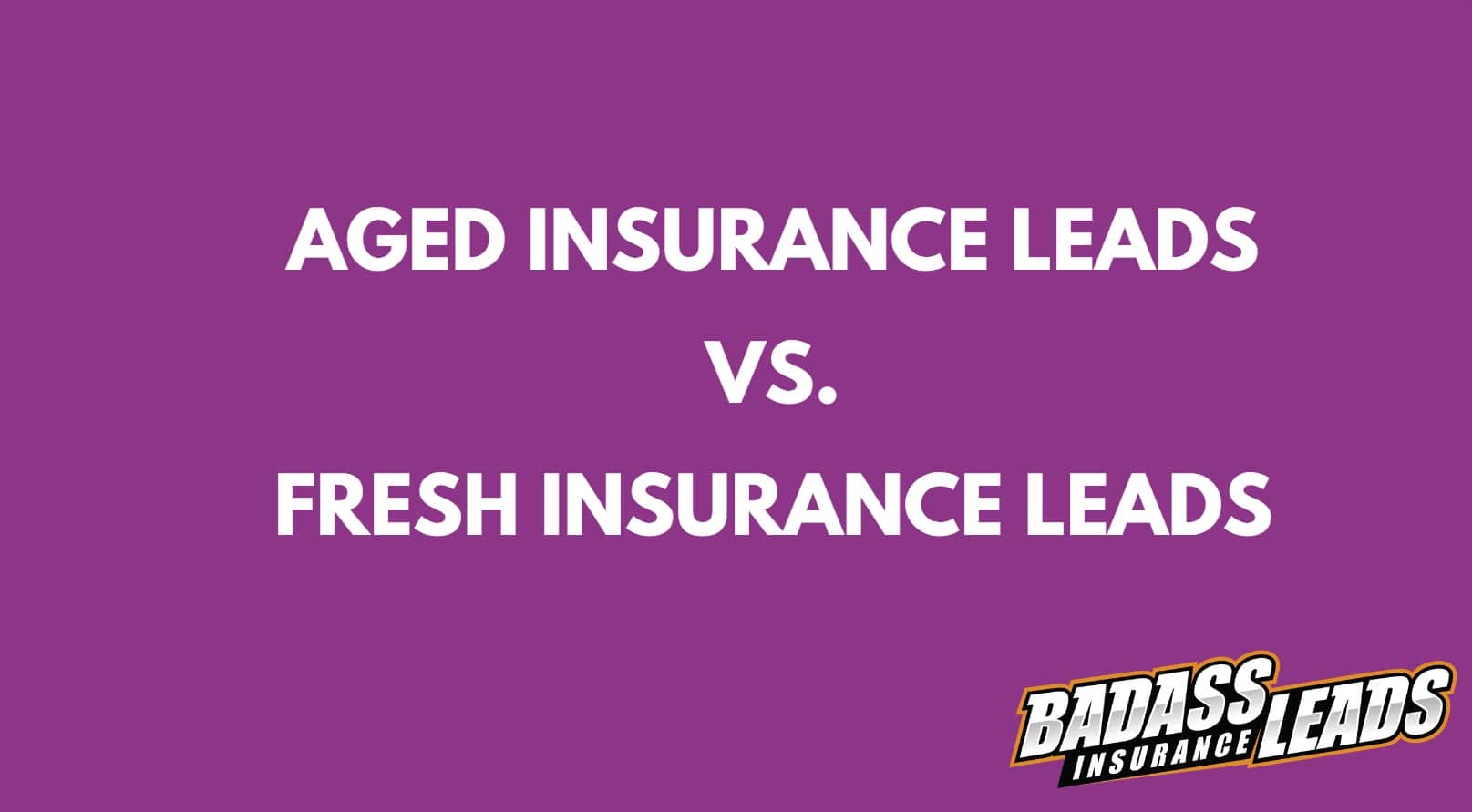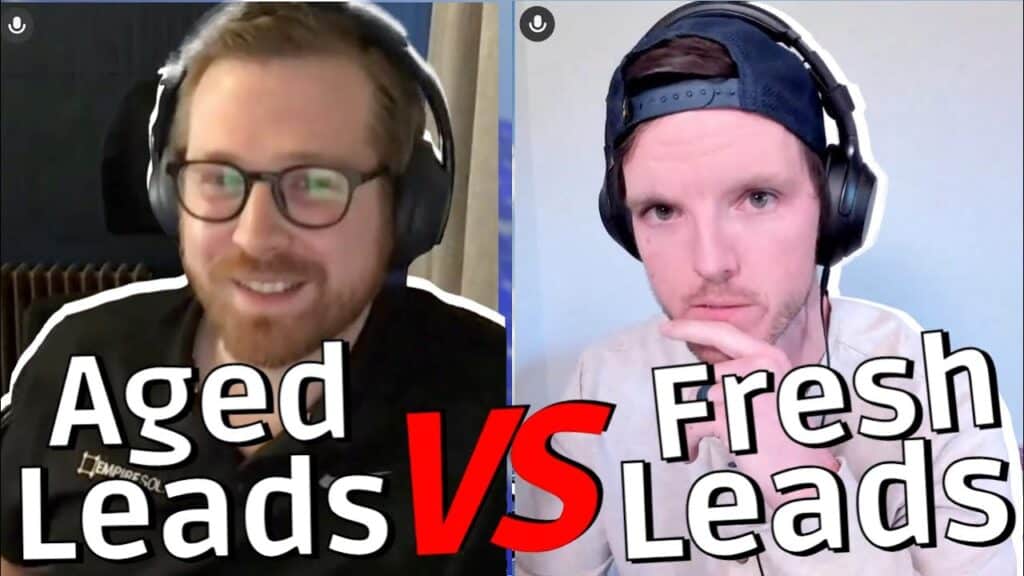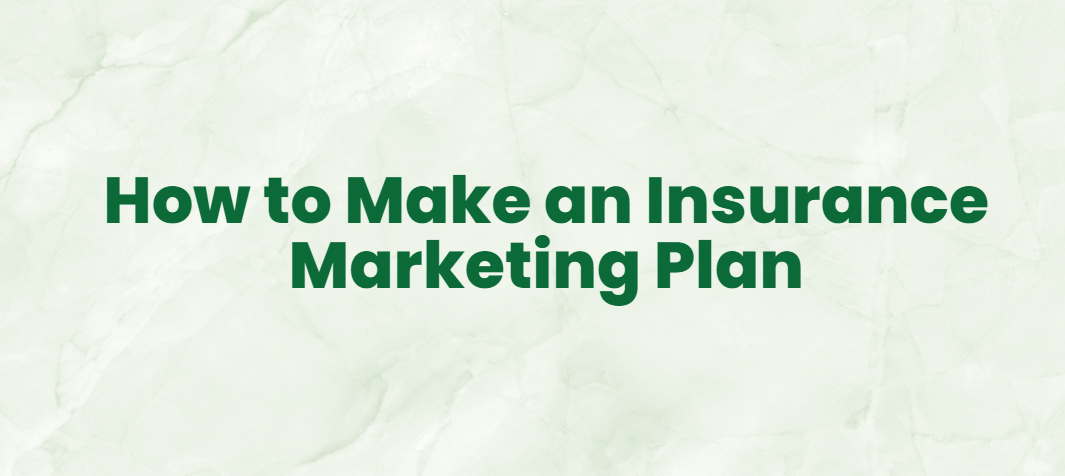
Aged Insurance Leads Vs. Fresh: Pros & Cons
When it comes to choosing between aged insurance leads and fresh insurance leads, there’s plenty of room for debate.
Do you know the differences between these kinds of leads?
In this post, we’ll dive into the pros and cons of aged and fresh insurance leads, starting with a high-level overview.

Comparing Aged and Fresh Insurance Leads
Aged leads or fresh leads? It’s a longstanding question – the ultimate showdown in insurance lead generation – but which is right for your business?
Let’s begin with definitions.
What Are Aged Insurance Leads?
Aged insurance leads are for potential clients who have expressed interest in buying insurance at some point in the past. Their contact information has been collected by lead vendors, making them ripe for outreach from agents like you.
Aged final expense leads can be a goldmine if you’re targeting seniors looking to secure their financial future.
What Are Fresh Insurance Leads?
Fresh insurance leads are real-time leads that come straight from people who are actively seeking coverage. You get exclusive access to hot prospects before they’ve had time to cool down.
It doesn’t get fresher than that!
Now, let’s have a look at how aged and fresh insurance leads stack up in terms of:
- Costs
- Closing rates
- Management strategies
Budget-Conscious or Paying for Premium?
- Aged leads are budget-friendly because they’ve already been sold once or twice – maybe even three times…
- Fresh real-time insurance leads tend to come with higher price tags due to their exclusivity and immediate availability.

How to Cut Costs Without Cutting Corners
- Purchase shared rather than exclusive fresh leads. Other agents will receive the same leads, but if you couldn’t handle a little competition, you would have quit the insurance biz a long time ago.
- Buy your leads in bulk. Many lead vendors offer discounts for large orders.
Aged vs. Fresh Leads: Quantity or Quality?
The More the Merrier

Compared to fresh insurance leads, aged leads have lower average closing rates, but don’t let that deter you.
The affordability of these leads means that you can buy more of them, giving you additional opportunities to close deals and grow your insurance business.
Less Is More
Fresh leads have higher closing rates than aged leads. After all, these are real-time leads for folks who are actively seeking coverage.
Management Strategies for Aged & Fresh Leads
Whether you go with aged or fresh insurance leads, here are some best practices to keep in mind:
- Create a system for contacting leads as soon as possible.
- Maintain detailed records of all interactions with prospects so nothing slips through the cracks.
- Analyze performance data regularly. This will help you identify trends and areas for improvement.
That’s your high-level overview of the costs, closing rates, and management strategies associated with aged and fresh insurance leads.
Now let’s take a deeper dive.
Aged vs. Fresh Insurance Leads: Costs
Aged Leads: The Budget-Friendly Option
Aged leads are an affordable alternative for insurance agents and brokers looking to stretch their marketing budget. You can typically find these golden oldies at a fraction of the cost of their fresher counterparts.
The reason?
They’ve already experienced multiple cycles of activity. But, despite having been through the hands of other agents, these leads can still be worth your attention and investment.
Real-Time Leads: Urgency & Exclusivity
As these insurance leads are generated on-demand and in real-time, they come with a heftier price tag. But you’ll be one of the first (if not THE first) agent to contact the prospect.
This makes real-time leads a life-saver for inexperienced or rookie agents. Rather than fight through the competition, you can just pick up the phone and reach a prospect that wants to talk insurance coverage today.
Key Takeaway:
Aged insurance leads are the more cost-effective option, but fresh leads are easier to work with. For that reason, real-time leads are probably best for inexperienced agents.
Aged vs. Fresh Insurance Leads: Closing Rates
Aged Lead Conversion Rates
Aged leads might be a bit colder, but they can still pack a punch in terms of conversion rates – if you know how to work them.
Studies have shown that aged lead conversion rates hover around 10%, which isn’t too shabby considering their lower cost.
Fresh Lead Conversion Rates
On the other hand, real-time insurance leads have been reported to convert at rates of 15-20%.
You can chalk up the higher closing rate to two main factors:
- The urgency of the prospect
- The exclusivity of the lead
Key Takeaway:
Fresh insurance leads convert at a rate 15-20%. That’s because they’re exclusive and hot off the presses. But with a little bit of work, you can close approximately 10% of your aged insurance leads.
7 Tips for Managing Your Insurance Leads
- Prioritize Your Leads
Whether you’re using aged or fresh insurance leads, you should create a system for prioritizing your efforts based on factors such as:
- Lead type
- Accuracy of your contact info
- Prospect’s interest
This will help you focus your energy on the most promising opportunities.
- Optimize Your Contact Strategy
Contacting leads is an art.
Develop a winning strategy by testing different approaches, such as email sequences or phone call scripts, with both aged and fresh prospects.
This will help you determine the most effective way to reach your target audience.
- Track Your Sales
Analyze data from your interactions with different types of leads – for example, exclusive or shared leads – to identify trends in your conversion rates.
This will help you optimize your approach and boost your bottom line.
- Master the Follow-Up
- Emails? Check.
- SMS messages? Yup.
- Friendly phone calls? You betcha.
- In-person meetings (when possible)? Absolutely.
Following up with leads is crucial to converting them into customers.
Make sure you have a solid follow-up strategy in place that includes multiple touchpoints.
- Leverage Tech
There are many technologies available to help you manage your leads more efficiently.
Consider using lead generation software, customer relationship management (CRM) tools, and/or marketing automation platforms to streamline your processes.
- Don’t Forget to Network
Network with other successful insurance agents – both in-person and in online forums.
You’ll make important contacts that could well turn into leads. And you’ll stay up-to-date with the latest insurance industry trends.
- The Killer Combo: Aged and Fresh Leads
To maximize your success, consider using aged and fresh leads.
This balanced approach allows you to capitalize on the cost-effectiveness of aged leads while benefiting from the higher closing rates associated with exclusive real-time leads.
FAQs in Relation to Aged Insurance Leads Versus Fresh Insurance Leads
What is an aged lead?
An aged lead refers to a potential customer who expressed interest in purchasing insurance at some point in the past but has not yet been contacted or converted into a sale.
These leads are typically less expensive than fresh leads as they may require more effort and nurturing to convert into clients.
How do you generate quality life insurance leads?
To generate quality life insurance leads, focus on targeted marketing strategies such as:
- Paid online advertising
- Social media campaigns
- Email marketing
- Webinars and seminars
- Networking with professionals in related industries
You could also use search engine optimization (SEO) to improve the visibility of your website.
How much should you spend on life insurance leads?
The amount spent on life insurance leads depends on factors like target audience size, desired closing rate, and available budget.
Generally speaking, allocate 10-15% of your total revenue for lead generation efforts. Just be sure to monitor your return on investment (ROI) to determine if adjustments need to be made over time.
What is lead generation in insurance?
Lead generation in insurance involves identifying and attracting potential customers interested in purchasing various types of insurance coverage.
Effective methods include:
- Digital advertising campaigns targeting specific audiences.
- Engagement via informational content.
- Leveraging professional networks for referrals.
- Purchasing aged or fresh, real-time insurance leads.
Conclusion
When it comes to buying insurance leads, you’ve got a couple of options. You can go with aged leads or fresh, real-time leads.
Both have their pros and cons.
While aged leads are generally more cost-effective, fresh leads offer better conversion rates. Before making a decision, it’s important that you think about the costs, closing rates, and management strategies associated with each lead type.
If you’re looking for high-quality insurance leads to grow your business today, visit Badass Insurance Leads. Our team provides both aged and fresh lead options with industry-leading conversion rates.
Contact us now to learn more!






